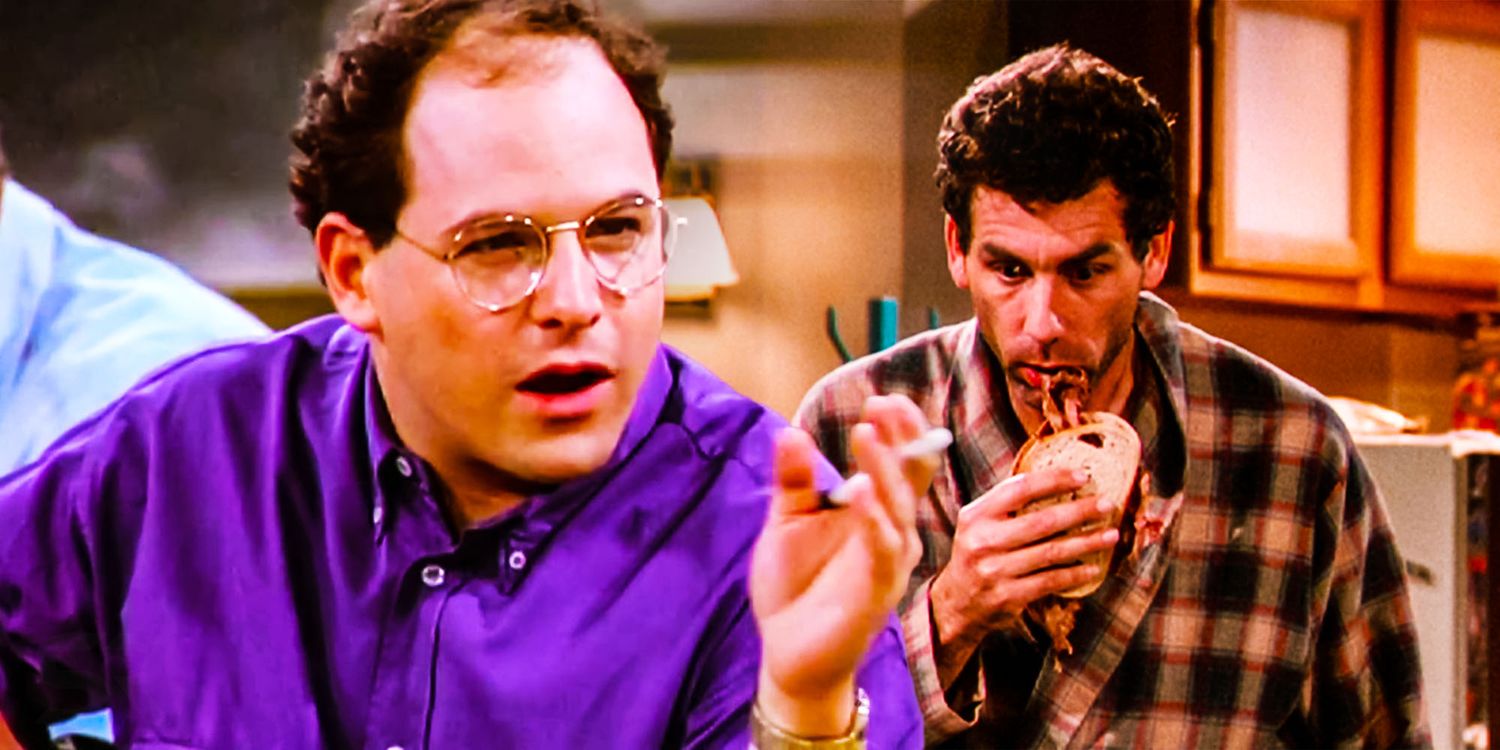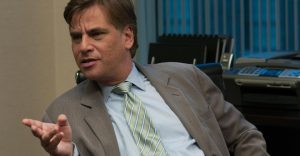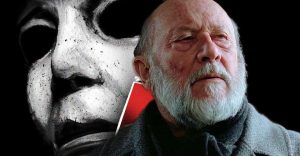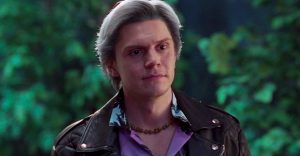Every Way Seinfeld’s Pilot Was Different From The Rest Of The Show

The pilot episode of Seinfeld had a number of major differences from the iconic sitcom that followed it. Created by Jerry Seinfeld and Larry David, the “show about nothing” ran on NBC between 1989 and 1998 gaining legendary status in the canon of network sitcoms. The pilot, originally titled “The Seinfeld Chronicles” has a very slight plot, even by Seinfeld standards. It solely revolves around Jerry trying to work out if a visit from a woman called Louise is a date or not. “The Seinfeld Chronicles” aired on NBC in the summer of 1989, was received well by critics and audiences, and was commissioned for season 1 in 1990.
Prior to its well-received July 5th airing, “The Seinfeld Chronicles” had been deemed unworthy of a series order from NBC, having gone down poorly with test audiences. Thiswould later inspire the “Jerry” storyline in Seinfeld season 4. Responding to the positive reception from critics and audiences, NBC picked up Seinfeld for an initial four episodes, but there was almost a full year between the airing of “The Seinfeld Chronicles” and Seinfeld season 1, episode 2, “The Stakeout”. This timeframe enabled Jerry Seinfeld and Larry David to rethink the show, resulting in a very different Seinfeld than the one in the pilot.
That’s not to say that the Seinfeld pilot is unrecognizable from the hugely influential sitcom that followed it. Most notably, the conversations between Jerry and George (Jason Alexander) are very similar to those that came to define the show until Seinfeld ended in 1998. Their first scene together involves Jerry grilling George on his choice of shirt, and asking if he recalls noting the positioning of the buttons on it. “The second button literally makes or breaks the shirt” Jerry observes to an irritated George. This is exactly the sort of small-scale back-and-forth that defines Jerry, George, Elaine, and Kramer’s friendships throughout Seinfeld. However, Elaine and Kramer are just two of the major differences present in the Seinfeld pilot.
There’s No Elaine
The most notable absence from the Seinfeld pilot is Julia-Louis Dreyfus as Elaine Benes, who wasn’t conceived of by Jerry and Larry when the pilot was written. Elaine joins the show, and completes the cast for season 1, episode 2 “The Stakeout”. Elaine is introduced as Jerry’s ex-girlfriend, the couple has recently broken up but has agreed to remain friends. Elaine and Jerry spend “The Stake Out” adjusting to their new dynamic, accompanying each other to parties and weddings, but still refusing to talk to each other about their romantic relationships. By the end of the episode, they agree to talk about their romantic couplings and failings more in order to remain friends, thus setting up their dynamic for the rest of the show. “The Stakeout” is, therefore, the pilot for the version of Seinfeld that audiences know and love, whereas “The Seinfeld Chronicles” misses this key dynamic.
Claire The Waitress Was The Female Lead
It was intended that Claire (Lee Garlington), the waitress in Jerry and George’s local diner is the lead femalecharacter in Seinfeld‘s Elaine-less pilot. She only gets one scene in the pilot, delivering dry, deadpan put-downs to Jerry and George during their inane conversation about shirts and decaf coffee. The intention is clearly to have Claire serve as a reality check for Jerry and George’s New York neuroses, but the character was ultimately written out of future episodes. There have been many rumors about why Garlington’s character was written out of Seinfeld, with the reason being either that NBC wanted a female character who could hang out with Jerry and George as friends, or that Larry David was angry that she rewrote her one and only scene in the pilot. Perhaps it was somewhere in the middle, but Claire’s never seen again after she spikes George’s decaf coffee with some caffeine.
They’re Not In Monk’s Café
Tom’s Restaurant in Manhattan doubled up for Jerry’s favored hangout, Monk’s Café, which practically became a Seinfeld character. Despite the scenes being shot on a set, Tom’s Restaurant has since become a Mecca for Seinfeld fans around the world to visit. However, the iconic frontage doesn’t appear in the Seinfeld pilot, as Jerry and George instead eat at Pete’s Luncheonette. After the pilot’s caffeine incident, it’s likely that George insists that they never go to Pete’s again.
Kramer Is Kessler
Unlike Julia-Louis Dreyfus, Michael Richards does appear in the Seinfeld pilot, though not quite in the way he’s remembered. Named Kessler, Richards’ character in the pilot is markedly different from the Kramer that appears in the rest of Seinfeld. The most obvious difference is in how the character is introduced. In Seinfeld, Kramer is known for making an entrance, throwing open the door, and skidding his way into Jerry’s Manhattan apartment. In the pilot, he politely knocks on the door to announce his arrival at 1 in the morning, before spoiling the result of the Mets game and asking to use some meat from Jerry’s fridge, which is admittedly much more on brand for Kramer.
The wild hair and rayon print shirts are also absent from the character, with Kessler instead wandering the apartment in a dressing gown. Jerry states that Kessler hasn’t left their apartment building for 10 years, implying that he’s a shut-in. This particular character trait would have robbed Seinfeld viewers of some of Kramer’s greatest adventures across the show’s nine seasons.
The Decor In Jerry’s Apartment Isn’t Quite There Yet
The apartment featured in the Seinfeld pilot is a lot dingier and much smaller than in later episodes. Jerry’s home contains no evidence of Jerry’s obsession with breakfast cereal or Superman, and his cupboards look much more ramshackle than the sleek, modern kitchen units from later in the show. The most glaring difference, however, is how Jerry’s bathroom opens right out into the lounge, rather than beyond a hallway as in later episodes. Surely the notoriously hygienic and neurotic Jerry Seinfeld wouldn’t countenance having his bathroom so close to his lounge and kitchen. Jerry’s apartment in the pilot seems specifically designed to pay off his later gag that “it kinda motivates me to work on the road,” rather than to create a believable living space.
Seinfeld’s Stand-Up Sets Are Much More Integral To The Pilot
Seinfeld started life as a potential 90-minute showcase of Jerry Seinfeld’s stand-up material to be aired on NBC. The original pitch for Seinfeld would have focused on the central concept of how a stand-up comic comes up with their material, putting Jerry in various scenarios that would inspire the jokes. While that idea never made it to the screen, the bare bones of it can be seen in the structure of the Seinfeld pilot. George regularly references Jerry’s job, asking him why he’s not doing a second show in one of the first scenes, and later telling him that he’s “on stage in 25 minutes“, signaling a cut to one of Seinfeld’s routines.
In merging the fictional situation with Seinfeld’s existing material,the show blurred the lines between fiction and reality, enabling Jerry Seinfeld to essentially play himself. However, the connection between the material and the fictional situation is most obvious in the Seinfeld pilot. It’s intrinsically linked to Louise’s visit to New York. For example, when Jerry finally discovers that she’s engaged, the episode ends with a routine about the difficulties faced by single men and women in meeting each other. The stand-up sequences are shot much differently in the pilot, feeling more like a stand-up special than a sitcom. There’s a more cinematic quality to the way the camera moves around Jerry as he performs his routine, often in wide-shot.
This continues in season 1, episode 2, “The Stake Out”, but already the camera is moving further into Jerry Seinfeld as a performer with more locked-off shots of the comedian. The venue is also much more clearly defined, with the red velvet curtain providing a reassuring backdrop for these scenes until they’re discontinued after Seinfeld season 7. Opening episode 2 with a slicker-looking stand-up routine means that Seinfeld immediately feels like a more polished production than the rough-around-the-edges stand-up special vibe of the pilot. While it would still take time for the show to properly find its feet, this step up in production values makes a firm statement of intent for Seinfeld‘s subsequent stratospheric success.























